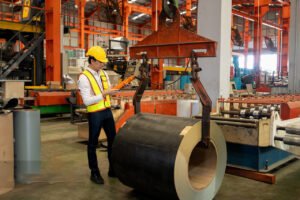Расчет веса нержавеющего листа: формула от мм до кг
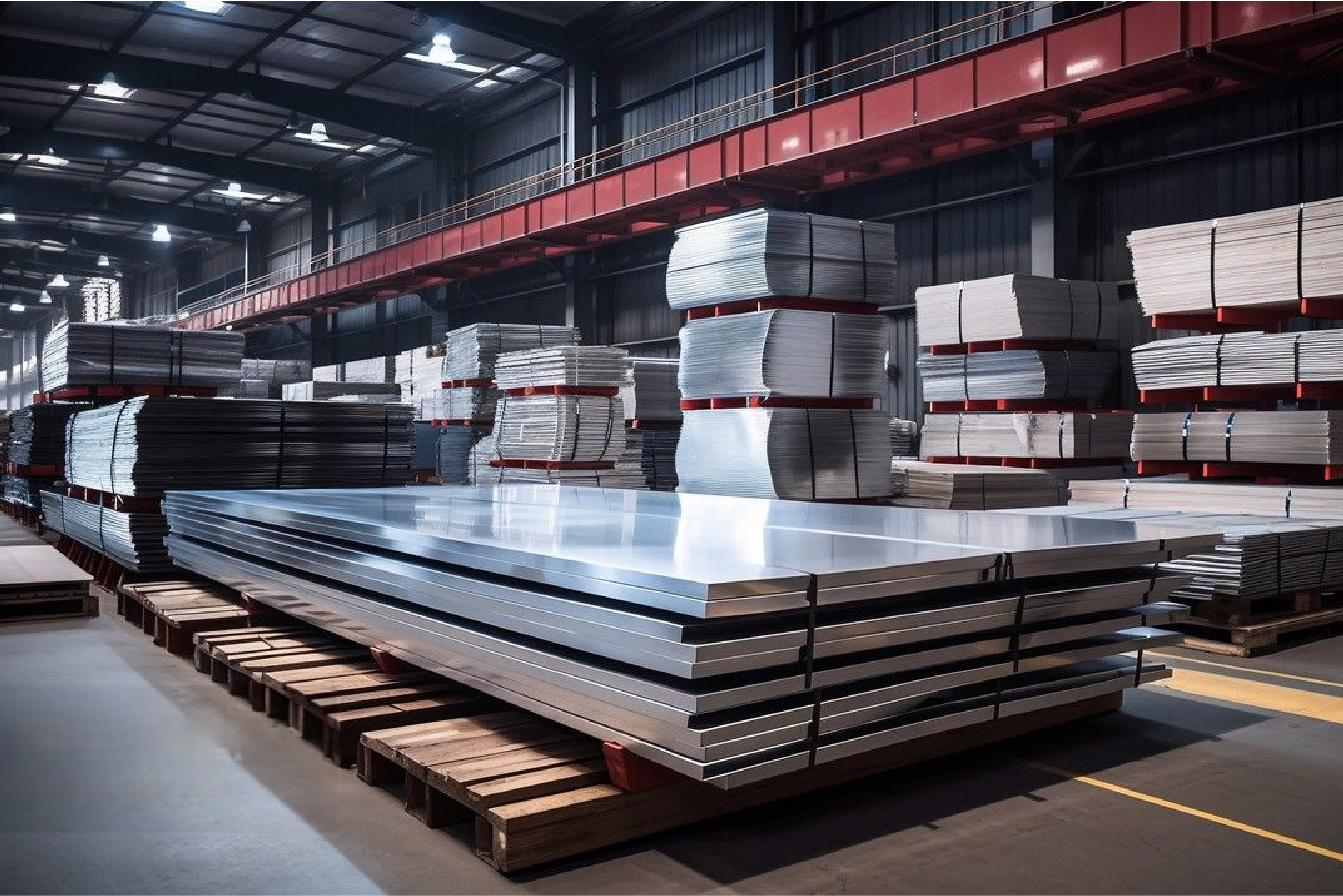
Вы испытываете трудности с точным расчетом потребности в материалах или стоимости доставки листов из нержавеющей стали? Неточные расчеты веса могут привести к непредвиденным расходам и логистической головной боли. Будучи директором по глобальному бизнесу компании MFY, я убедился в том, насколько важны точные расчеты, и это руководство вооружит вас необходимыми формулами и знаниями о соотношении мм к кг.
Расчет веса листа из нержавеющей стали производится по формуле: Расчет веса: Вес (кг) = Длина (м) × Ширина (м) × Толщина (мм) × Плотность (кг/м³) / 1000. Точное определение каждой переменной, особенно правильной плотности для конкретной марки нержавеющей стали, имеет решающее значение для получения точных результатов.
Понимание этого расчета - не просто техническое упражнение; это краеугольный камень эффективного управления проектами и контроля затрат в любой отрасли, где используется нержавеющая сталь. Независимо от того, занимаетесь ли вы производством, строительством или дистрибуцией, правильный расчет веса влияет на все - от первоначального составления бюджета до окончательной установки. Давайте разберемся, как это можно сделать.
На протяжении всех лет работы в компании MFY, ориентируясь в сложностях мирового рынка нержавеющей стали, я постоянно подчеркивал важность точности. Неправильная оценка веса не только влияет на стоимость перевозки; она может привести к заказу слишком большого или слишком малого количества материала, что повлияет на производственные графики и даже на целостность конструкции, если она не соответствует спецификации. Например, один крупный инженерный подрядчик, с которым мы работаем в Юго-Восточной Азии, однажды столкнулся со значительными задержками в реализации проекта из-за того, что его первоначальный расчёты веса1 для крупной партии листов 316L была занижена на 8%, что привело к заниженным требованиям к грузоподъемности крана на площадке. Это показало, как небольшая, на первый взгляд, ошибка в расчетах может привести к существенным проблемам в работе. Данное руководство призвано дать вам ясность, необходимую для того, чтобы избежать подобных ловушек, опираясь на обширный опыт MFY в цепочке поставок нержавеющей стали.
Как определить толщину листа нержавеющей стали в миллиметрах?
Вы когда-нибудь сталкивались с тем, что не знаете точной толщины листа нержавеющей стали, что может привести к ошибкам в расчетах? Такая неопределенность может поставить под угрозу расчет стоимости материалов для всего проекта. Как человек, глубоко вовлеченный в торговлю нержавеющей сталью, я знаю, что точные измерительные инструменты - ваш лучший союзник в этом деле.
Чтобы определить толщину листа из нержавеющей стали в миллиметрах, используйте точные измерительные приборы, такие как микрометр или верньерный штангенциркуль. Для точности измерения следует проводить в нескольких точках листа и вычислять среднее значение, особенно для больших листов.
Точное измерение толщины листа из нержавеющей стали - это основополагающий первый шаг перед надежным расчетом веса. Дело не только в наличии инструмента, но и в правильном его использовании и понимании возможных отклонений. По моему опыту работы в MFY, мы часто советуем клиентам, особенно в сфере точного производства, инвестировать в качественные измерительные приборы и установить последовательный протокол измерений. Например, один из клиентов, занимающийся производством высокоточных компонентов для аэрокосмической отрасли, рассказал о том, как внедрение системы трехточечных измерений на пластину с использованием калиброванных цифровых штангенциркулей значительно сократило расхождения в материале и улучшило прогнозирование затрат. Выбор между микрометром и штангенциркулем часто зависит от требуемой точности и доступности пластины. Микрометры, как правило, обеспечивают более высокую точность, что идеально подходит для тонких листов или в тех случаях, когда строгие допуски имеют первостепенное значение. Штангенциркули, хотя и обладают чуть меньшей точностью, более универсальны для различных типов измерений, включая внутренние и внешние размеры, если необходимо, а не только толщину листа. Помните, что сам процесс производства может вносить небольшие изменения в толщину большого листа, поэтому полагаться на одно точечное измерение может быть ошибочно. Именно поэтому внутренний контроль качества в MFY для наших рулонов и листов из нержавеющей стали включает в себя множество проверок.
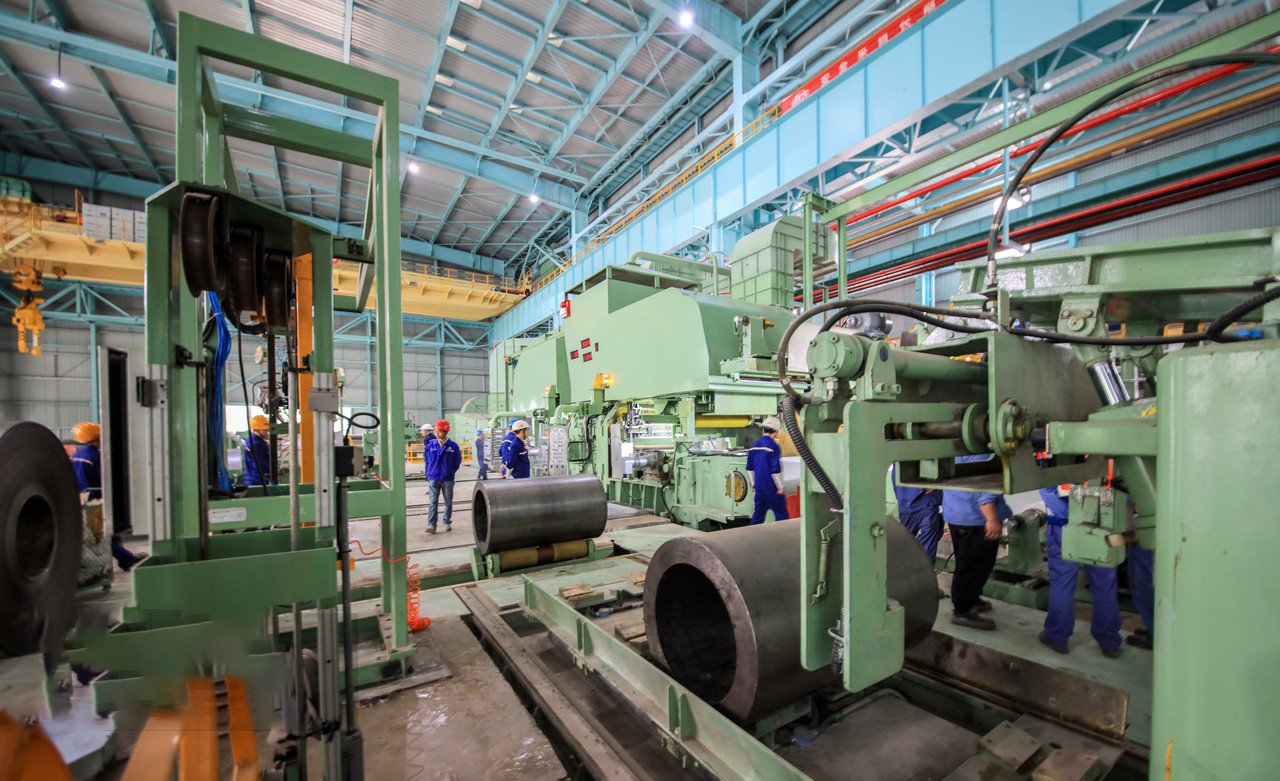
Понимание допусков на измерения в пластинах из нержавеющей стали
Листы из нержавеющей стали, как и все промышленные товары, производятся с определенными допусками на размеры. Допуск на толщину означает допустимое отклонение от номинальной (заданной) толщины. Стандарты, такие как ASTM A480/A480M, определяют эти допустимые диапазоны для различных толщин и типов листов. Например, для горячекатаного листа из нержавеющей стали номинальной толщиной 5 мм (например, тип 304) стандарт ASTM A480 допускает отклонение ±0,30 мм. Это означает, что фактическая толщина может варьироваться от 4,70 мм до 5,30 мм. Такие допуски существуют из-за переменных параметров, присущих этапам прокатки и обработки; достижение абсолютного совершенства практически и экономически неосуществимо.
Последствия неучета этих допусков могут быть значительными, особенно при работе с большими партиями материала. Если проект разработан на основе номинальной толщины, но поставляемые листы постоянно находятся в верхней части диапазона допусков, общий вес материала будет выше, чем предполагалось. Я вспоминаю конкретный случай с клиентом, компанией "BuildStrong Inc.", строительным подрядчиком, специализирующимся на крупномасштабных архитектурных проектах. Они заказали значительное количество листов из нержавеющей стали для фасада. Первоначальные расчеты веса были основаны строго на номинальной толщине. Однако поставленный материал, хотя и находился в полном соответствии с допуском ASTM, был преимущественно выше этого допуска. В результате общая партия оказалась почти на 4% тяжелее, чем было предусмотрено в бюджете, что сказалось не только на стоимости материала, но и, что более важно, на транспортной логистике и грузоподъемности оборудования, которое они организовали на месте. Этот опыт научил их, а нас в MFY - подтвердил важность учета потенциального диапазона толщины, особенно для чувствительных к весу приложений.
В практических целях при расчете веса для оценки некоторые руководители проектов могут использовать номинальную толщину, в то время как другие, для консервативного бюджетирования, могут использовать номинальную плюс определенный процент от допуска или даже максимально допустимую толщину. Для очень крупных заказов полезным может оказаться запрос на измерение фактической толщины по образцу или понимание типичных производственных отклонений поставщика. В MFY, когда клиент особенно чувствителен к весу или точности размеров, мы тесно сотрудничаем с ним, чтобы обеспечить соответствие поставляемого материала его специфическим, иногда более жестким, чем стандартные, требованиям, используя возможности нашей интегрированной цепочки поставок.
Лучшие практики использования инструментов измерения
Точность измерения толщины напрямую зависит от правильности использования выбранного вами инструмента. Для микрометров перед использованием всегда проверяйте чистоту наковальни и поверхности шпинделя. Микрометр должен быть правильно "обнулен" - для большинства это означает, что "0" на наперстке совпадает с точечной линией на гильзе при закрытых торцах. При измерении прикладывайте постоянное, мягкое давление с помощью храпового упора или фрикционного наперстка; чрезмерное затягивание может деформировать тонкие пластины или привести к неточным показаниям. Я видел, как техники, только начавшие работать с микрометрами, иногда с силой натягивают наперсток, что является распространенной ошибкой.
Верньерные или цифровые штангенциркули более универсальны, но требуют осторожного обращения, чтобы избежать ошибок. При измерении толщины, Погрешности измерения штангенциркулем2 следует избегать. Убедитесь, что губки перпендикулярны поверхности пластины, чтобы избежать ошибки параллакса.
Очень важно, что все измерительные инструменты требуют регулярной калибровки. На перерабатывающих предприятиях MFY в наших лабораториях контроля качества существует строгий график калибровки микрометров, штангенциркулей и другого метрологического оборудования по прослеживаемым стандартам. Это гарантирует неизменную точность измерений, на которые мы опираемся при производстве рулонов, листов и труб из нержавеющей стали. Для предприятий, ежедневно использующих эти инструменты, проведение внутренней калибровки, даже если это простое сравнение с набором измерительных блоков, может предотвратить смещение и сохранить целостность измерений. Игнорировать калибровку - все равно что ориентироваться без истинного севера: рано или поздно вы собьетесь с курса.
Значение нескольких точек измерения
Одно измерение толщины листа из нержавеющей стали, особенно большого, редко является показательным для всего листа. Отклонения могут быть вызваны процессом прокатки, незначительной короной (когда центр может быть немного толще или тоньше, чем края) или даже незначительными неровностями поверхности. Поэтому проведение измерений в нескольких точках является важнейшей передовой практикой. Для прямоугольных пластин обычно измеряют возле каждого из четырех углов и одного в центре. Для очень больших пластин может потребоваться больше точек по краям и по всей ширине.
Сняв несколько показаний, вы можете рассчитать среднюю толщину, которая дает более точное представление об общем объеме материала пластины. Это среднее значение затем используется в формуле расчета веса. Например, наш клиент из MFY, компания PrecisionFab Ltd., занимающаяся интеграцией оборудования, столкнулась с проблемой расхождений между расчетным и фактическим расходом материала при изготовлении сложных изделий. Мы посоветовали им внедрить протокол измерений по пяти точкам для всех поступающих листов нержавеющей стали. После этого они сообщили о постоянном повышении точности оценки материалов на 5%, что значительно повлияло на стоимость и прибыльность их проектов.
Данные, собранные по нескольким точкам, могут также выявить значительные отклонения от допусков в конкретной области, что может быть критично для определенных применений. Например, если один край постоянно тоньше остальных, это может стать проблемой для сварки или для компонентов, требующих равномерной несущей способности. Такой подробный подход позволяет не ограничиваться простым числом, а получить более полное представление о материале, с которым вы работаете.
Вот простая таблица, иллюстрирующая, как может работать усреднение:
| Точка измерения | Толщина (мм) |
|---|---|
| Угол 1 (верхний левый) | 4.95 |
| Угол 2 (верхний-правый) | 5.02 |
| Центр | 5.05 |
| Угол 3 (нижний левый) | 4.98 |
| Угол 4 (нижний-правый) | 5.00 |
| Средняя толщина | 5.00 |
Использование этой средней толщины в последующих расчетах позволит получить гораздо более надежную оценку веса, чем опора на одно, потенциально нерепрезентативное, измерение.
Микрометры обеспечивают более высокую точность, чем штангенциркулиПравда
Микрометры предназначены для высокоточных измерений, особенно для тонких материалов, а штангенциркули более универсальны, но чуть менее точны.
Для определения толщины достаточно одного измеренияЛожь
Из-за возможных колебаний толщины пластины для точного определения толщины необходимо провести несколько измерений и усреднить их результаты.
По какой формуле можно перевести миллиметры толщины в килограммы веса?
Вы ломаете голову над тем, как перевести размеры листа, особенно толщину в миллиметрах, в практический вес в килограммах? Использование неправильной или неполной формулы - распространенный подводный камень, приводящий к дорогостоящим ошибкам. С высоты своего положения в MFY я могу заверить вас, что существует стандартная, надежная формула.
Формула для перевода размеров листа из нержавеющей стали, включая толщину в миллиметрах, в вес в килограммах такова: Вес (кг) = Длина (м) × Ширина (м) × Толщина (мм) × Плотность (кг/м³) / 1000. Это обеспечивает согласованность единиц измерения для получения точного результата.
Эта формула является основой для точного расчета веса листов из нержавеющей стали. Каждый компонент играет важную роль: Длина и ширина, обычно измеряемые в метрах (м), определяют площадь листа. Толщина, которую для точности удобнее измерять в миллиметрах (мм), должна быть правильно учтена. На сайте Плотность нержавеющей стали3, характерный для марки нержавеющей стали (например, 304, 316L, 430) и выраженный в килограммах на кубический метр (кг/м³), является важнейшим множителем. Деление на 1000 - это важнейший коэффициент пересчета, который согласовывает единицу толщины (мм) с другими единицами (м), чтобы получить окончательный вес в килограммах (кг). Как мы в MFY часто объясняем нашим клиентам, особенно тем, кто только начинает заниматься международной закупкой нержавеющей стали, понимание того, почему существует каждая часть этой формулы, и обеспечение согласованности единиц измерения имеет первостепенное значение. Например, дистрибьютор, с которым мы сотрудничаем в Индии, сначала столкнулся с проблемами, потому что его старая система инвентаризации автоматически не обрабатывала преобразование толщины из мм в метры, что приводило к заниженным оценкам, пока формула не была правильно реализована на их платформе. Это подчеркивает, как, казалось бы, незначительная деталь в формуле может иметь широкие операционные последствия.

Выведение формулы расчета веса: Пошаговое описание
Фундаментальный принцип расчета веса любого однородного предмета заключается в следующем Вес = Объем × Плотность. Давайте разберемся, как мы получаем конкретную формулу для листа из нержавеющей стали.
Сначала мы вычислим объем пластины. Для прямоугольной пластины объем равен Длина × Ширина × Толщина. Чтобы наши единицы измерения соответствовали значению плотности (которая обычно выражается в кг/м³), мы должны стремиться к тому, чтобы наш объем был выражен в кубических метрах (м³). Если длина (L) и ширина (W) измеряются в метрах (м), а толщина (T) - в миллиметрах (мм), нам нужно перевести толщину в метры. Поскольку 1 метр = 1000 миллиметров, Толщина (м) = Толщина (мм) / 1000.
Итак, Объем (м³) = Д (м) × Ш (м) × [Т (мм) / 1000].
Далее мы включаем плотность. Сайт плотность (ρ)4 для нержавеющей стали обычно указывается в кг/м³.
Поэтому, Вес (кг) = Объем (м³) × Плотность (кг/м³).
Подставив выражение для объема, получим:
Вес (кг) = [Д (м) × Ш (м) × Т (мм) / 1000] × ρ (кг/м³).
Для наглядности это часто переставляют так:
Вес (кг) = (Д (м) × Ш (м) × Т (мм) × ρ (кг/м³)) / 1000.
В компании MFY наши внутренние ERP-системы и инструменты котировки таких продуктов, как рулоны и листы из нержавеющей стали, построены на основе этой стандартизированной формулы. Например, чтобы рассчитать вес листа из нержавеющей стали типа 304 длиной 2,5 метра, шириной 1,2 метра и толщиной 3 мм (плотность 304 SS ≈ 8000 кг/м³):
Вес (кг) = (2,5 м × 1,2 м × 3 мм × 8000 кг/м³) / 1000
Вес (кг) = (9 м² × мм × 8000 кг/м³) / 1000 (Неправильный промежуточный шаг, должно быть (2.5 * 1.2 * 3 * 8000) / 1000)
Давайте исправим это: Объем = 2,5 м * 1,2 м * (3/1000)м = 0,009 м³.
Вес = 0,009 м³ * 8000 кг/м³ = 72 кг.
Используя комбинированную формулу: (2,5 × 1,2 × 3 × 8000) / 1000 = 72000 / 1000 = 72 кг.
Это систематическое вычисление обеспечивает правильное обращение со всеми единицами измерения, что приводит к получению точного веса в килограммах.
Распространенные ошибки и как их избежать при применении формул
Одна из самых частых ошибок, с которыми я сталкивался в своей карьере, как внутри компании, так и с клиентами, - это несоответствие единиц измерения. Если длина измеряется в метрах, ширина - в сантиметрах, а толщина - в миллиметрах, простое перемножение этих чисел приведет к бессмысленному результату. Очень важно перевести все единицы измерения в единую базу (предпочтительно в метры для длины, ширины и толщины) перед применением формулы. Например, один из клиентов, дистрибьютор SteelStock Global, однажды обнаружил значительное расхождение в запасах в течение нескольких месяцев из-за электронной таблицы, в которой одно измерение постоянно вводилось в сантиметрах без преобразования, что искажало все последующие расчеты веса.
Еще один распространенный подводный камень - использование неправильного или общего значения плотности. Нержавеющая сталь - это не единый материал, а семейство сплавов, и разные марки (например, 304, 316, 430) имеют немного разную плотность из-за различий в химическом составе (содержание хрома, никеля, молибдена и т. д.). Использование общей "стальной" плотности (около 7850 кг/м³) вместо конкретной плотности для конкретной марки нержавеющей стали может внести погрешность в 1-3%, что может быть существенным для крупных заказов. В компании MFY мы всегда подчеркиваем необходимость использования плотности для конкретной марки, которую мы указываем в наших спецификациях материалов.
Наконец, возможны простые ошибки в расчетах, особенно при ручных вычислениях или поспешном составлении электронных таблиц. Двойная проверка записей и логики формул жизненно важна. Если сравнивать ручные и автоматизированные методы расчета, то автоматизированные инструменты (например, хорошо продуманные электронные таблицы или специальное программное обеспечение) значительно снижают риск арифметических ошибок и обеспечивают последовательное применение правильных формул и преобразований единиц измерения. Именно по этой причине мы перевели многие внутренние процессы быстрой оценки в MFY с ручных таблиц на калькуляторы на основе электронных таблиц, что повысило скорость и точность расчетов.
Адаптация формулы для различных форм (помимо прямоугольных пластин)
В то время как L × W × T часть расчета объема специфична для прямоугольных пластин, основной принцип Вес = Объем × Плотность применяется повсеместно. Для листов или деталей из нержавеющей стали, которые не являются прямоугольными (например, круглые, треугольные или более сложные профили), первым шагом является точный расчет площади поверхности формы.
Для круглой пластины площадь (A) равна π × r² (где r - радиус). Тогда объем будет равен A × T (Площадь × Толщина).
Для треугольной пластины площадь (A) равна (основание × высота) / 2. Объем будет A × T.
После определения правильного объема (V) в кубических метрах (при этом толщина T должна быть пересчитана в метры, если она измеряется в мм: T(m) = T(mm)/1000), расчет веса остается: Вес (кг) = V (м³) × ρ (кг/м³).
Я помню проект с клиентом, который производил на заказ резервуары из нержавеющей стали. Им нужно было рассчитать вес больших круглых торцевых крышек. Их первоначальный подход к расчету площади был немного неправильным, и как только мы помогли им уточнить расчет площади для кругов (πr²), а затем применил Объем = Площадь × Толщина (в пересчете на метры) Таким образом, расчеты материалов для этих компонентов стали гораздо точнее. Это обычное требование во многих отраслях производства, где MFY поставляет листы нержавеющей стали, которые впоследствии разрезаются на различные формы. Для сложных форм программное обеспечение CAD часто рассчитывает объем напрямую, что упрощает этот процесс.
Here’s a table with area formulas for common shapes, which then feed into Volume = Area × Thickness:
| Shape | Area Formula | Volume Formula (T in mm, converted) |
|---|---|---|
| Rectangle | Length × Width |
L(m) × W(m) × (T(mm)/1000) |
| Circle | π × radius² (πr²) |
π × r(m)² × (T(mm)/1000) |
| Triangle | (Base × Height) / 2 |
(B(m) × H(m) / 2) × (T(mm)/1000) |
| Ring (Annulus) | π × (R² - r²) (R=outer radius, r=inner radius) |
π × (R(m)² - r(m)²) × (T(mm)/1000) |
This adaptability ensures that accurate weight calculations can be performed for a wide variety of stainless steel components, not just standard plates.
Плотность влияет на расчет весаПравда
Different stainless steel grades have unique densities that must be used in the formula for accurate results.
Thickness doesn't need conversionЛожь
Thickness in millimeters must be divided by 1000 to convert to meters for unit consistency in the formula.
Как рассчитать объем пластины из нержавеющей стали, прежде чем определить ее вес?
Unsure how to correctly determine the volume of your stainless steel plate, a critical step before you can even think about its weight? An error here will inevitably lead to an incorrect final weight. My experience at MFY confirms that a solid grasp of Длина × Ширина × Толщина is essential.
To calculate the volume of a rectangular stainless steel plate, multiply its length by its width and then by its thickness. It's crucial to ensure all three dimensions are in consistent units (e.g., all in meters or all converted to meters) before multiplication to get Volume = L × W × T.
Calculating the volume is the indispensable precursor to determining the weight of any stainless steel plate. Think of it as defining the three-dimensional space the material occupies. The formula Volume = Length × Width × Thickness is straightforward for rectangular or square plates, which form the bulk of many orders we handle at MFY for our stainless steel sheet and coil products. However, the critical detail, one I often emphasize to our newer team members and clients, lies in unit consistency5. If your length is in meters, width in centimeters, and thickness in millimeters, simply multiplying 2 × 100 × 5 will give you a meaningless number. All dimensions must be converted to a single, consistent unit – typically meters – before multiplication to yield a volume in cubic meters (m³). This m³ value then directly plugs into the Вес = Объем × Плотность equation. For instance, a manufacturing client processing our stainless steel coils into smaller sheets learned early on to standardize all their internal measurement inputs to meters to streamline their automated cutting and weight logging systems, a practice MFY fully supports for efficiency and accuracy.
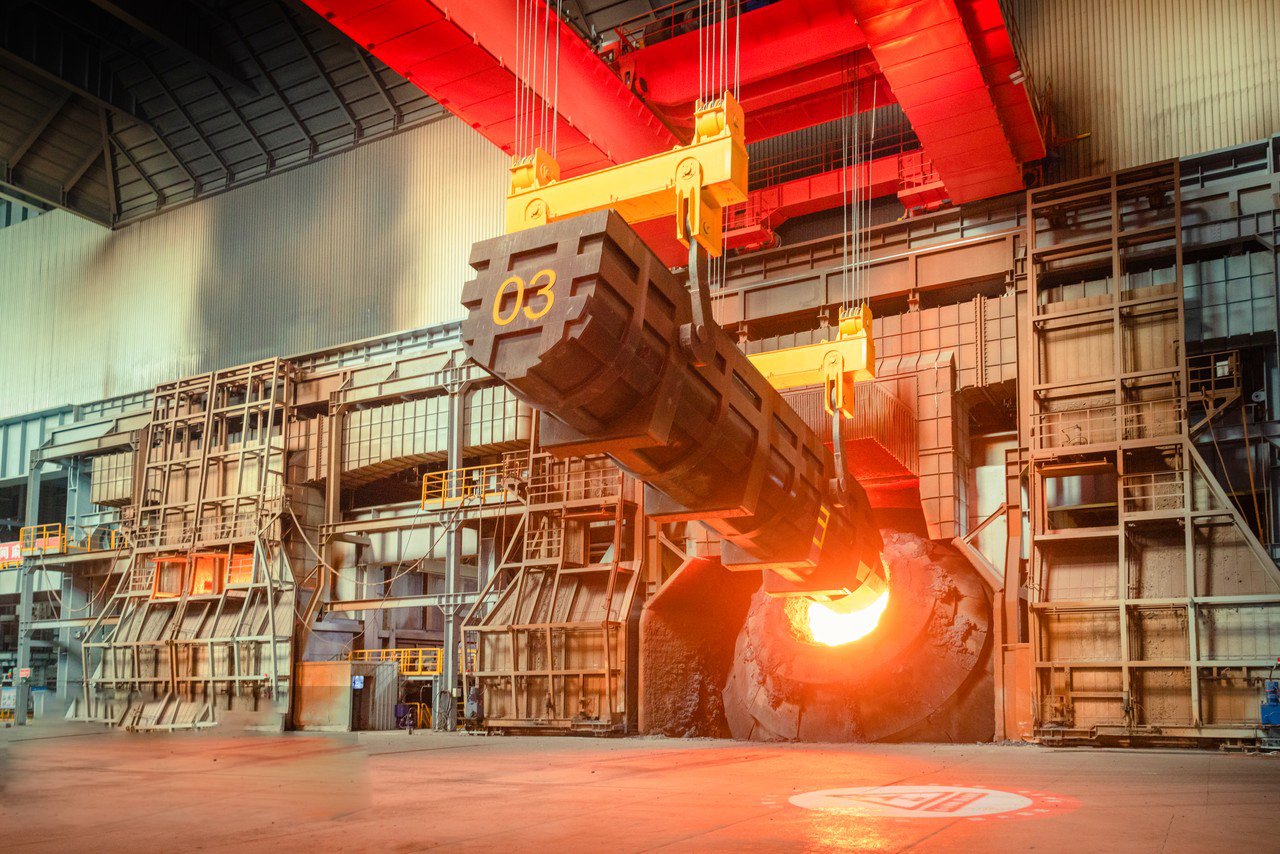
The Importance of Unit Consistency in Volume Calculation
The most common source of error in volume calculation is the mixing of units. It's incredibly easy to overlook if one dimension is in meters, another in centimeters, and thickness in millimeters. This happens frequently in fast-paced environments or when data is transcribed from various sources. As I’ve stressed before, if Length (L) = 2 meters, Width (W) = 100 centimeters, and Thickness (T) = 5 millimeters, a direct multiplication 2 × 100 × 5 = 1000 gives a nonsensical result. The correct approach is to convert all dimensions to a single base unit, ideally meters, до performing the multiplication.
So, L = 2 m.
W = 100 cm = 1 m (since 100 cm = 1 m).
T = 5 mm = 0.005 m (since 1000 mm = 1 m).
Now, Volume = L × W × T = 2 m × 1 m × 0.005 m = 0.01 m³. This value of 0.01 cubic meters is the correct volume to use for subsequent weight calculation.
This discipline of unit conversion is fundamental. I recall a situation with "InfraBuild Solutions," an engineering contractor client of MFY. They were working on a large infrastructure project requiring thousands of varied stainless steel components. Their initial material take-off sheets, compiled by several junior engineers, had inconsistent unit entries. This led to a significant over-ordering of certain materials because volumes were inadvertently inflated. After a joint review, we helped them implement a standardized template for their take-off sheets that enforced all dimensional inputs in meters. This simple change eliminated a major source of error and improved their material procurement efficiency considerably.
The impact of inconsistent units is not just an arithmetic error; it's a financial and logistical one. Overestimating volume leads to over-ordering material, unnecessary shipping costs, and storage issues. Underestimating can lead to project delays and emergency re-orders at premium prices. Ensuring every team member involved in estimation or procurement understands and meticulously applies unit conversion is a non-negotiable aspect of professional practice in industries using steel.
Calculating Volume for Irregularly Shaped Plates
While many stainless steel applications use standard rectangular plates, MFY also supplies material for projects involving irregularly shaped components. Calculating the volume of these requires different approaches. One common method is decomposition: breaking down the complex shape into a series of simpler, regular geometric forms (rectangles, triangles, circles, etc.). The area of each simple form is calculated, summed up, and then multiplied by the uniform thickness to get the total volume. This method can be laborious and prone to error if the decomposition is not accurate.
A far more efficient and accurate method for complex shapes involves using Computer-Aided Design (CAD) software. When a component is designed in 2D or 3D CAD, most software packages can automatically calculate the surface area (for 2D designs) or directly the volume (for 3D models) with high precision. This is particularly useful for intricate cut-outs or curved profiles. Many of MFY's manufacturing clients, such as "CustomMetalWorks," who specialize in bespoke fabrications, rely heavily on CAD data. They provide us with DXF or STEP files, from which our technical team can extract precise area or volume information if needed for estimating material requirements for our stainless steel sheets or plates before processing.
For very small, highly irregular physical parts where CAD models aren't available, the water displacement method (Archimedes' principle) can theoretically determine volume. The part is submerged in water, and the volume of displaced water equals the part's volume. However, this is impractical for large stainless steel plates and is more of a laboratory technique. The key takeaway is that for non-standard shapes, leveraging technology like CAD or meticulous geometric decomposition is essential for accurate volume determination before applying the thickness.
Accounting for Cut-outs and Holes in Volume Calculation
Many stainless steel plates are not solid slabs but feature cut-outs, holes, or perforations as part of their design for functional or aesthetic reasons. In these cases, calculating the net volume (the actual volume of the steel) is crucial. The general approach is:
- Calculate the gross volume of the plate as if it were solid:
Gross Volume = Length × Width × Thickness(using consistent units). - Calculate the volume of each cut-out or hole. For a circular hole, this would be
Volume_hole = π × radius_hole² × Thickness. For a rectangular cut-out,Volume_cutout = Length_cutout × Width_cutout × Thickness. - Sum the volumes of all such voids:
Total Void Volume = Sum of all Volume_hole / Volume_cutout. - Subtract the total void volume from the gross volume:
Net Volume = Gross Volume - Total Void Volume.
This net volume is then used to calculate the actual weight of the processed plate. I worked with a client, "PanelTech Systems," who manufactures large batches of perforated stainless steel sheets for architectural and industrial screening applications. Their initial estimates sometimes didn't fully account for the material removed by the perforations, leading to discrepancies in shipping weights and material costing. By implementing a system that precisely calculated the volume of steel removed by their perforation patterns (often a percentage based on the open area), they significantly improved their inventory accuracy and cost control. MFY's advanced processing lines can often be programmed not only to make the cuts but also to log the theoretical volume of material removed, aiding in such calculations if required by the client for their specific needs.
Here's an example for a plate with one circular hole:
Plate: 1m x 1m, 10mm thick. Hole: 0.2m radius.
Gross Volume = 1m × 1m × 0.01m = 0.01 m³
Hole Volume = π × (0.2m)² × 0.01m ≈ 3.14159 × 0.04m² × 0.01m ≈ 0.0012566 m³
Net Volume = 0.01 m³ - 0.0012566 m³ ≈ 0.0087434 m³
This net volume would then be multiplied by the density to find the weight.
| Компонент | Calculation | Result (m³) |
|---|---|---|
| Plate Dimensions | L=1m, W=1m, T=10mm (0.01m) | |
| Gross Volume | 1 × 1 × 0.01 |
0.0100000 |
| Hole Radius | r=0.2m | |
| Hole Volume | π × (0.2)² × 0.01 |
0.0012566 |
| Net Volume | Gross Volume - Hole Volume |
0.0087434 |
This meticulous approach is vital for any application involving processed or patterned stainless steel plates.
Volume requires consistent unitsПравда
All dimensions must be converted to the same unit (e.g., meters) before calculating volume to avoid errors.
Water displacement works for large platesЛожь
Water displacement is impractical for large stainless steel plates; it's mainly a laboratory technique for small objects.
Как плотность нержавеющей стали влияет на расчет веса?
Are you overlooking the specific density of your stainless steel grade6, potentially skewing your weight calculations? Treating all stainless steels as having the same density is a common oversight that can lead to inaccuracies. As a supplier, MFY understands material properties are key.
The density of stainless steel, which varies depending on its specific grade (e.g., 304, 316, 430), is a direct multiplier in the weight formula (Weight = Volume × Density). Using the accurate density value for the specific alloy is crucial for precise weight calculation.
Density, defined as mass per unit volume, is a fundamental property of any material, and for stainless steel, it's not a one-size-fits-all value. The precise chemical composition of each stainless steel grade – the specific percentages of chromium, nickel, molybdenum, manganese, and other alloying elements – influences its overall density. For instance, austenitic grades like 304 or 316 generally have slightly higher densities (around 7900-8000 kg/m³) compared to ferritic grades like 430 (around 7700-7750 kg/m³) due to differences in their atomic structure and the atomic weights of their constituents, particularly nickel content. When we at MFY provide a quote or material specification for our stainless steel coils or sheets, we always consider the specific grade requested by clients, such as those in India or Southeast Asia, because this directly impacts the calculated weight for shipping and invoicing. Using a generic "steel" density can introduce errors of 1-3%, which, while seemingly small, can accumulate to significant amounts on large consignments. It's a detail that underscores the importance of precision in material science for practical commercial applications.
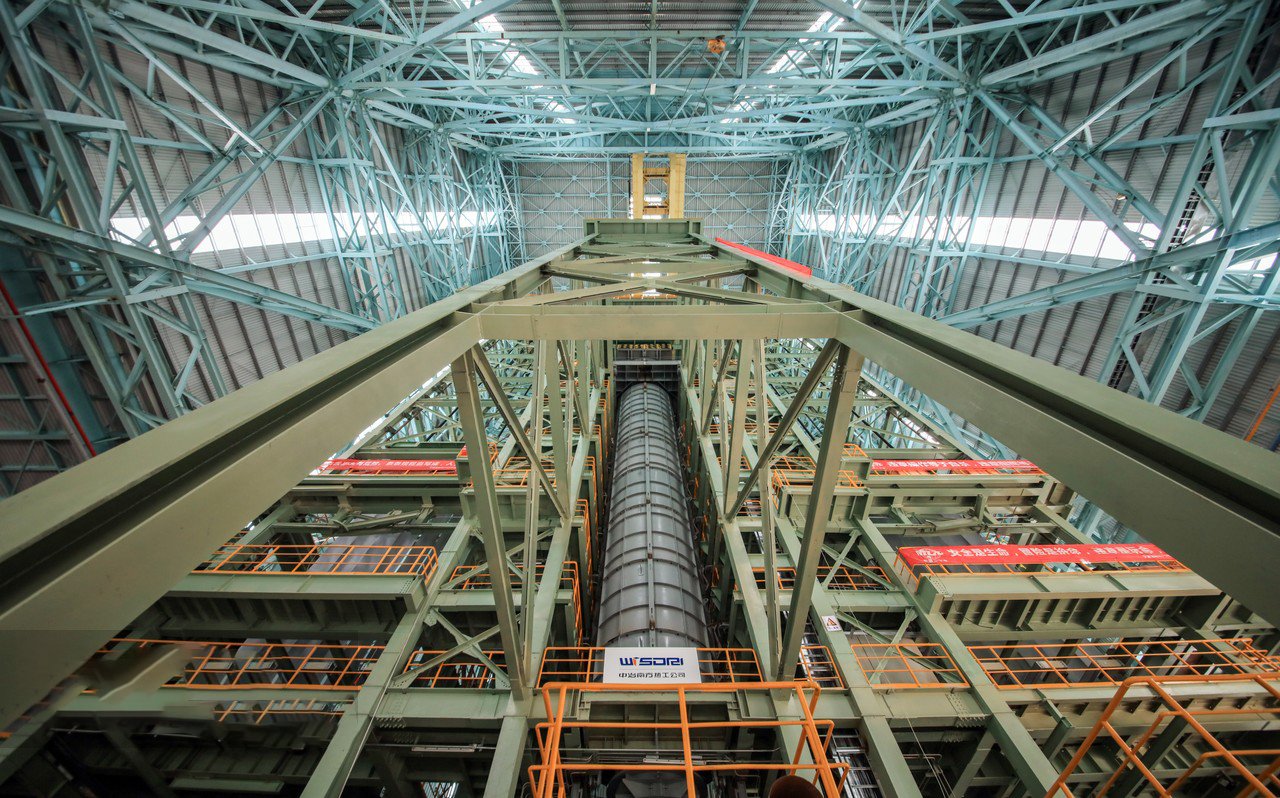
Understanding Density Variations Across Different Stainless Steel Grades
Density is an intrinsic property, fundamentally defined as mass per unit volume (ρ = m/V). In the context of stainless steel, this value is primarily determined by its elemental composition and, to a lesser extent, its crystallographic structure. Alloying elements such as chromium (Cr), nickel (Ni), molybdenum (Mo), manganese (Mn), and silicon (Si) are added to iron (Fe) to create various grades of stainless steel, each with unique properties. These elements have different atomic masses and pack differently within the steel's crystal lattice, leading to variations in overall density.
For example, austenitic stainless steels like AISI 304 (typically ~18% Cr, ~8% Ni) and AISI 316 (typically ~16-18% Cr, ~10-14% Ni, ~2-3% Mo) have densities around 7950-8000 kg/m³. The higher nickel content in these grades contributes to their slightly higher density compared to ferritic grades like AISI 430 (typically ~16-18% Cr, low Ni), which has a density closer to 7700-7750 kg/m³. Duplex stainless steels, which have a mixed austenite-ferrite microstructure, typically have densities around 7800-7850 kg/m³, falling between the two main groups. Using a generic "steel" density (often cited as 7850 kg/m³ for carbon steel) for all stainless steel calculations is a common mistake that can lead to appreciable errors. If you're calculating the weight of a large batch of 316L plates (density ~7980 kg/m³) but use 7850 kg/m³, your estimate will be low by about 1.6%. On a 100-tonne order, that's a 1.6-tonne discrepancy.
I recall a case with "EquipTech Global," a manufacturing company that produces specialized equipment using both 304 and 316L stainless steel components. Initially, their inventory and costing systems used a single, averaged density value for all stainless steel. This led to persistent small discrepancies in their material reconciliation reports. After a consultation, MFY helped them refine their bill of materials (BOM) to include grade-specific densities. This simple change led to a reported 3% improvement in their inventory valuation accuracy and better cost tracking per project. This illustrates that precision in material data directly translates to better business intelligence.
Here's a table of typical densities for common stainless steel grades:
| Stainless Steel Grade | Typical Density (kg/m³) | Примечания |
|---|---|---|
| AISI 304 / 304L | 7950 - 8000 | Common austenitic grade |
| AISI 316 / 316L | 7980 - 8030 | Austenitic, higher Mo and Ni content |
| AISI 430 | 7700 - 7750 | Common ferritic grade |
| AISI 410 | 7750 - 7800 | Martensitic grade |
| Дуплекс 2205 | 7800 - 7850 | Austenitic-ferritic |
| Carbon Steel (for ref) | ~7850 | For comparison only |
Note: These are typical values; always refer to manufacturer specifications or relevant standards for precise figures.
Sources for Accurate Density Data
Obtaining accurate density data for the specific grade of stainless steel you are using is paramount. The primary and most reliable source is the material datasheet or Mill Test Certificate (MTC) provided by the manufacturer or supplier, such as MFY. These documents detail the chemical composition and mechanical properties of the specific heat or batch of steel, and often include the nominal density or enough information to accurately ascertain it. MFY makes it a standard practice to provide comprehensive MTCs with all our shipments of stainless steel coils, sheets, and pipes, ensuring our clients in target markets like the Middle East or Russia have the precise data they need.
Reputable industry standards and engineering handbooks are another excellent source. Organizations like ASTM International, ASM International (publisher of the ASM Handbook series), and national standards bodies publish extensive data on material properties, including densities for various alloys. For example, the ASM Handbook, Volume 1: Properties and Selection: Irons, Steels, and High-Performance Alloys, is a widely respected reference.
Online material property databases can also be useful, but it's crucial to verify the credibility of the source. University websites, well-known material science portals, or established industry associations are generally reliable. However, generic web search results should be cross-referenced with more authoritative sources. When comparing manufacturer data versus generic handbook data, manufacturer data for a specific batch is often the most precise, as handbook values are typically nominal or average figures for a grade. However, for general estimation purposes, reputable handbook values are perfectly acceptable.
The Influence of Temperature on Density (and its relevance in calculations)
Materials, including stainless steel, generally expand when heated and contract when cooled. This phenomenon is known as thermal expansion. As the volume of a material changes with temperature (while its mass remains constant), its density also changes inversely: Density = Mass / Volume. If temperature increases, volume increases, and thus density decreases slightly. The extent of this change is characterized by the coefficient of thermal expansion. Austenitic stainless steels, for example, have a coefficient of linear thermal expansion of roughly 17 x 10⁻⁶ m/(m·°C).
For most practical, day-to-day weight calculations of stainless steel plates at ambient or room temperatures (e.g., for logistics, inventory, basic structural estimation), the effect of temperature on density is negligible and typically ignored. The nominal density values provided in datasheets are usually for room temperature (around 20°C or 68°F). The slight variations in density due to typical ambient temperature fluctuations are usually well within the tolerance range of other measurements (like thickness or length/width) and the inherent variations in the material itself.
However, the influence of temperature on density can become significant in high-precision engineering applications or when materials are used at significantly elevated or cryogenic temperatures. For example, in the design of components for aerospace, power generation turbines, or certain chemical processing equipment operating under extreme temperatures, engineers must account for changes in density and other temperature-dependent material properties. A research note might indicate that the density of austenitic stainless steel changes by approximately -0.005% per degree Celsius rise in temperature. While small, over a large temperature range, this could be a factor for highly sensitive calculations. But for the vast majority of MFY’s clients, including manufacturing companies and engineering contractors who use our stainless steel products under more standard conditions, using the nominal room-temperature density is perfectly adequate and standard industry practice.
316 stainless steel is denser than 430Правда
Austenitic 316 (~7980-8030 kg/m³) contains more nickel and molybdenum than ferritic 430 (~7700-7750 kg/m³), resulting in higher density.
All stainless steel grades share identical densityЛожь
Density varies by 2-4% between grades (e.g., 304 vs 430) due to differing alloy compositions and crystal structures.
Какие инструменты могут помочь в точном расчете веса листа нержавеющей стали?
Tired of manual calculations for stainless steel plate weights, fearing a slip of the calculator could lead to costly errors? Such mistakes can impact your bottom line and project timelines. My work at MFY has shown me that leveraging the right tools can make all the difference.
Tools that assist in accurately calculating stainless steel plate weight range from basic handheld calculators for simple checks, to spreadsheet software like Excel or Google Sheets for customizable calculations, and specialized online weight calculators or integrated industry-specific software for greater efficiency.
In today's fast-paced business environment, especially in industries reliant on precise material management like construction or manufacturing, relying solely on manual calculations is becoming increasingly inefficient and prone to human error. As Global Business Director at MFY, I've seen firsthand how our clients benefit from adopting various tools to streamline their stainless steel weight calculations. Simple electronic calculators are fine for quick, one-off estimates. However, for repetitive tasks or managing multiple items, spreadsheet programs like Microsoft Excel or Google Sheets offer powerful capabilities. You can create templates with built-in formulas, unit conversions, and even look-up tables for densities of different stainless steel grades that MFY supplies. Beyond spreadsheets, numerous online weight calculators specific to metals7 are readily available, providing quick answers if you have the dimensions and grade. For larger enterprises, more sophisticated solutions like Enterprise Resource Planning (ERP) systems often integrate weight calculation modules directly into their inventory and procurement processes, drawing data from a central material database. The goal of using any tool is to enhance accuracy, save time, and reduce the risk of errors that can cascade into significant financial or logistical problems.

The choice of tool for calculating stainless steel plate weight often depends on the complexity of the task, the volume of calculations, and the level of integration required with other business processes.
Leveraging Spreadsheet Software (Excel, Google Sheets)
Spreadsheet software like Microsoft Excel or Google Sheets is arguably one of the most versatile and widely accessible tools for calculating stainless steel plate weights. Their power lies in flexibility. One can easily set up a worksheet with dedicated cells for inputting dimensions – Length (L), Width (W), and Thickness (T) – and another cell for the specific stainless steel grade's density (ρ). Then, a formula cell can be programmed to perform the calculation: =(L_cell * W_cell * T_cell_mm * Density_cell) / 1000. This provides an instant result in kilograms, assuming L and W are in meters and T is in millimeters. The beauty of this approach is its adaptability. You can create templates for different projects or material types, easily copy formulas for multiple line items, and sum total weights for an entire order or inventory list.
Further enhancements can include adding data validation to ensure inputs are numerical, or creating drop-down lists for common stainless steel grades (e.g., 304, 316L, 430 – all products MFY regularly exports) that automatically populate the correct density value from a hidden reference table. This reduces manual data entry for density and minimizes the risk of using an incorrect value. I've personally helped several of MFY's sales team members develop such customized spreadsheets. These tools allow them to rapidly and accurately generate weight estimates and proforma invoices for clients like "RapidBuild Construction," who frequently require quotes for diverse schedules of stainless steel plates and pipes across various dimensions and grades. The ability to save, share, and modify these spreadsheets makes them invaluable for collaborative projects.
Moreover, spreadsheets can track historical data, compare estimated versus actual weights, and even generate simple charts or reports. For many small to medium-sized enterprises, including distributors and traders who are key target clients for MFY, a well-structured spreadsheet is often the most cost-effective and efficient solution for managing weight calculations. They offer a good balance between manual control and automation, empowering users to understand and verify the calculation process.
Online Stainless Steel Weight Calculators
For quick, ad-hoc calculations, or for those who may not be comfortable setting up spreadsheet formulas, numerous online stainless steel weight calculators are available. A simple web search will yield many options, often provided by metal suppliers, industry associations, or engineering resource websites. These tools typically feature user-friendly interfaces where you input the shape (plate, pipe, bar, etc.), the material grade (often from a drop-down list), and the dimensions. The calculator then instantly provides the estimated weight.
When selecting an online calculator, it's advisable to look for certain features: a comprehensive list of stainless steel grades with their corresponding densities, options for different units of measurement (metric and imperial), and the ability to calculate weights for various common shapes beyond just rectangular plates (e.g., round bars, tubes, hexagonal bars). Some advanced calculators might even allow for inputting quantities or summing multiple items. The main advantages of online calculators are their ease of use – no setup is required – and their accessibility from any device with internet access. They are perfect for a quick check or for individuals who only occasionally need to perform such calculations.
However, there are also considerations. Users should be mindful of the source and reliability of the calculator; it's best to use tools from reputable industry names. MFY, for instance, is exploring adding such a utility to our website, www.mfysteel.com, as a service to our global clientele. Another potential downside is the lack of customization or the inability to save calculations for future reference or batch processing, which spreadsheets handle well. For one-off calculations for a specific plate of, say, 316L stainless steel sheet, an online tool is excellent. But for managing an entire bill of materials for a large project, it might be less efficient than a dedicated spreadsheet or software. Many of MFY's distributor partners in Southeast Asia and the Middle East do offer such calculators on their local websites, which helps their end-users in initial project estimations.
Advanced Tools: ERP/MRP Systems and CAD Software Integration
For larger manufacturing companies and complex engineering projects, more sophisticated tools like Enterprise Resource Planning (ERP) and Material Requirements Planning (MRP) systems often come into play. These integrated software solutions manage many aspects of a business, including inventory, procurement, production planning, and finance. Within their material master data modules, specific properties like density for each type of stainless steel (e.g., MFY's coils, sheets, or pipes) can be stored. When a production order or a bill of materials calls for a certain quantity and dimension of a specific grade, the ERP/MRP system can automatically calculate the required weight for procurement, inventory tracking, and costing purposes. This high level of automation reduces manual data entry, minimizes errors, and ensures consistency across the organization.
Another powerful advanced tool is Computer-Aided Design (CAD) software. When engineers design components or assemblies in 3D CAD systems (like SolidWorks, AutoCAD, CATIA, etc.), these programs can often calculate the volume of the designed part with very high precision. If the material (e.g., stainless steel grade 304) and its density are assigned to the 3D model, the software can then automatically compute the mass of the component. This is invaluable for complex shapes where manual volume calculation would be extremely difficult or impossible. This integration of design and material data streamlines the workflow from the engineering department to procurement and manufacturing.
The true power of these advanced tools lies in their integration capabilities. Data can flow seamlessly from a CAD model into an ERP system, which then uses the weight information for planning raw material purchases (perhaps from a supplier like MFY), scheduling production, and calculating shipping costs. MFY's vision includes developing digital tools and platforms that can interface more directly with our clients' ERP or procurement systems, facilitating a more efficient and transparent supply chain. This could involve API integrations for real-time stock information, automated quotation based on precise weight calculations, and streamlined order processing, ultimately helping our global clients build more efficient and competitive operations.
A comparative look at these tools:
| Тип инструмента | Основные характеристики | Плюсы | Cons | Best Suited For |
|---|---|---|---|---|
| Manual (Calculator) | Basic arithmetic | Simple for single items | Prone to error, slow for multiple items, no data storage | Quick, one-off checks |
| Spreadsheet (Excel/Sheets) | Formulas, templates, data storage, customization | Flexible, good for batch calcs, reusable, low cost | Requires setup, potential for formula errors if not careful | SMBs, regular multiple calculations, custom needs |
| Online Calculators | Web-based, pre-set grades/shapes | Easy to use, quick, no setup, accessible | Limited customization, reliability varies, not for batch processing | Occasional users, quick estimates, standard shapes |
| ERP/MRP Systems | Integrated with inventory, procurement, production | High automation, accuracy, centralized data, process efficiency | Expensive, complex implementation, requires data discipline | Larger enterprises, complex manufacturing operations |
| CAD Software | 3D modeling, volume/mass calculation | Highly accurate for complex shapes, design integration | Specialized software, primarily for design phase, requires expertise | Engineering design, custom/complex component mfg. |
Choosing the right tool, or combination of tools, ultimately depends on the specific needs, scale of operations, and technical capabilities of the user or organization.
Spreadsheets can calculate stainless steel weightПравда
Excel and Google Sheets can be programmed with formulas to accurately calculate stainless steel plate weights using dimensions and material density.
Online calculators store historical dataЛожь
Most online stainless steel weight calculators don't save calculations - this is a key advantage of spreadsheet solutions.
Заключение
Accurate stainless steel plate weight calculation, using the precise mm-to-kg formula, correct dimensions, and grade-specific density, is crucial. As your partner, MFY emphasizes this precision for efficient project planning, cost control, and successful logistics in all your stainless steel endeavors globally.
-
Learn the inaccuracies in weight calculations affect steel plate shipments ↩
-
Find How to avoid errors when using calipers for measuring stainless steel plates ↩
-
Learn the importance of accurate density values for precise weight calculations in steel trading. ↩
-
Compare the densities of common stainless steel grades to ensure accurate calculation
Why is unit consistency important in calculating metal volume?: null ↩ -
Learn how density variations influence weight calculations in industrial applications ↩
-
Discover reliable online tools for quick and easy stainless steel weight calculations ↩
-
Discover the best online calculators for stainless steel weight calculation ↩
У вас есть вопросы или нужна дополнительная информация?
Свяжитесь с нами, чтобы получить индивидуальную помощь и квалифицированный совет.
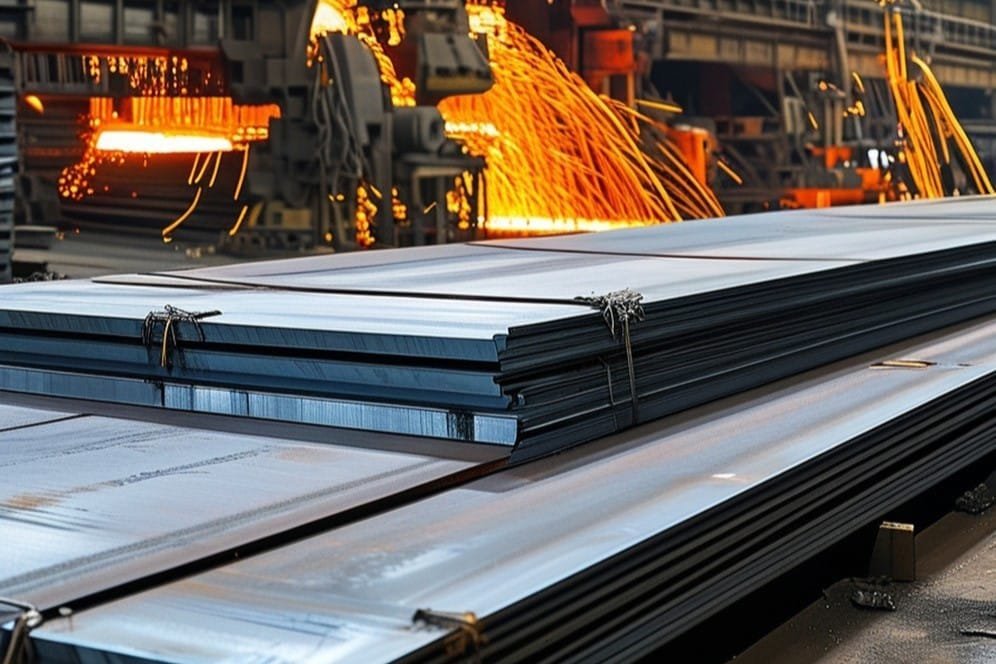

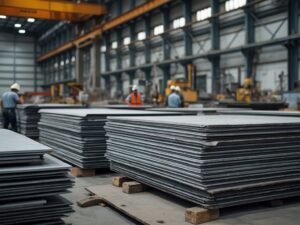

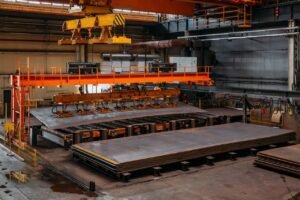
![Нержавеющий лист 304 цена за тонну 2025 [прогнозные данные и ключевые факторы]](https://mfysteel.com/wp-content/uploads/2025/06/18t07-300x200.png)

